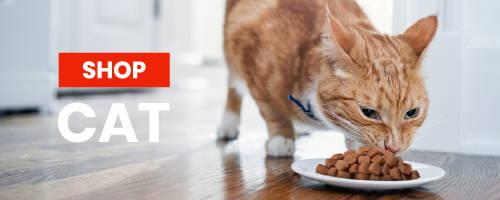Life stage nutrition
This means that the food has been designed to be fed for an intended life stage (e.g. puppy, adult, or mature adult). A food that is aimed at “all life stages” or for “growth and maintenance” may sound like a great idea as you can feed the one diet throughout the pet’s life. However, these diets need to contain enough nutrients (energy, fat, minerals) to meet the needs of growing puppies or kittens, which means they may contain an excess of certain nutrients for an adult or mature pet which may be lead to problems such as obesity. A true premium food is complete and balanced for its nutritional purpose.
Nutritional profile
Premium foods will be formulated to meet the nutritional profiles defined in a globally recognised International Nutritional Publication (INP), such as the Association of American Feed Control Officials (AAFCO) Official Publication in the US, or the European Pet Food Industry Federation (FEDIAF) Nutritional Guidelines in Europe. Premium foods manufactured outside of Europe will contain an AAFCO statement on the label:
- “Food ‘x’ is formulated to meet the nutritional levels established by the AAFCO Dog Food Nutrient Profiles for maintenance of adult dogs” meaning the food meets the nutrient requirements of the guideline on paper. However, it gives no information on how well the animal can digest and use those nutrients.
- “Animal feeding tests using AAFCO procedures substantiate that food ‘x’ provides complete and balanced nutrition for maintenance of adult dogs” meaning the food has passed an AAFCO feeding trial where it was fed as the sole diet to dogs and cats for at least six months. During the feeding trial the animals undergo regular clinical examinations, weight checks and blood tests to ensure they remain healthy. This method provides greater assurance that a food is fit for the purpose for which it was designed.
Fixed formulation
- Many low cost foods have variable rather than fixed formulations. For example, the ingredient list may say “meat and meat by-products derived from beef and/or pork and/or lamb and/or chicken”. This means that each batch of food may vary in the ingredients it contains depending on market availability or price. What this means for your pet is that each time you buy the product, the ingredients may be different, which increases the chance of gastrointestinal upsets. Maintaining a fixed formulation, as is used in premium foods, is more costly than a variable formulation.
High quality ingredients
- This is difficult to tell as manufacturers are not allowed to include a quality statement in the ingredient list e.g 'Grade A yellow corn' may be the actual ingredient, but you can only state “corn” on the list. This inability to express ingredient quality allows the use of poorer quality ingredients into a food. The use of chicken meal is a classic example – premium diets will contain high quality chicken meal (with minimal to no bone content – aka “low ash”), whereas lower quality diets will contain lower quality meals which contain a significant amount of bone and hence excess minerals. The only way you can determine quality is by looking at the label or speaking to the manufacturer to determine ash and/or mineral content.
- There are also other ingredients that may be included in premium diets for health benefits. Examples include antioxidants which help fight free radical production and help ensure a healthy immune system, and omega 3 and 6 fatty acids which help reduce inflammation and enhance hair and coat quality.
Other things to look for in a premium food
- Strong veterinary recommendation
- 100% money back guarantee
- Commitment to quality and safety
- Research and development
- Customer service
So, when compared to non-premium foods, premium foods offer many benefits to your pet because they have:
- Fixed formulation from batch to batch, reducing risk of stomach upsets, vomiting and diarrhoea
- Higher and consistent ingredient quality
- Higher digestibility which results in decreased stool volume
- High levels of omega fatty acids, contributing to richer hair and coat quality
- High levels of antioxidants with their immune system benefits
- Appropriate amounts of protein for a pet’s life stage which decreases unnecessary workload on organs such as the kidneys
- Lower fat levels which decreases the calorie intake and reduce risk of obesity
- Low ash content (mineral content from bone in animal meals) which avoids feeding excesses in minerals, such as calcium and phosphorus
- Safe and controlled levels of minerals such as salt, a taste enhancer, to support good kidney and heart health
A final reason to feed a premium diet to your pet is that you generally need to feed smaller amounts - the higher the quality and the more digestible a food is, the less waste out the other end (as well as less waste going in!). So although you may appear to be paying more for a smaller amount of food, the difference on a cost per day basis to feed a premium food can be quite small.
So hopefully you now have a clearer understanding about the difference between premium and non-premium pet foods and are inspired to feed the best possible diet to your pet.
Happy feeding (and loving) your pet.


